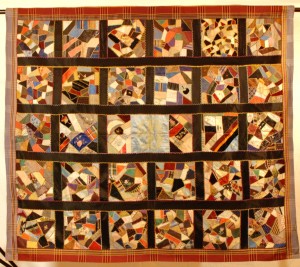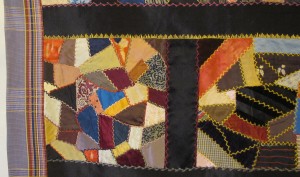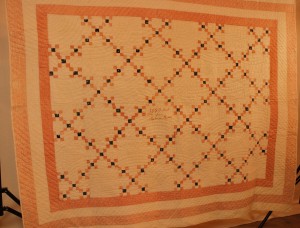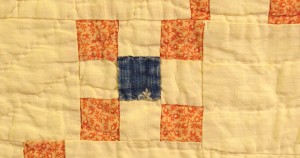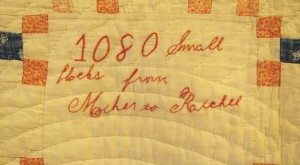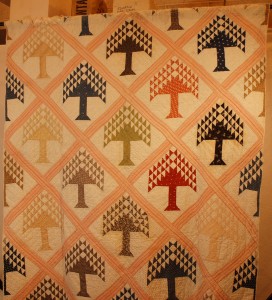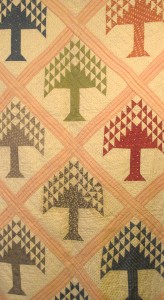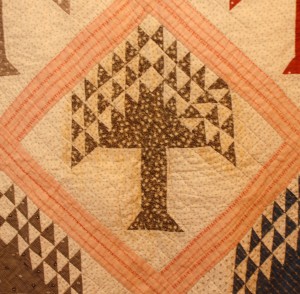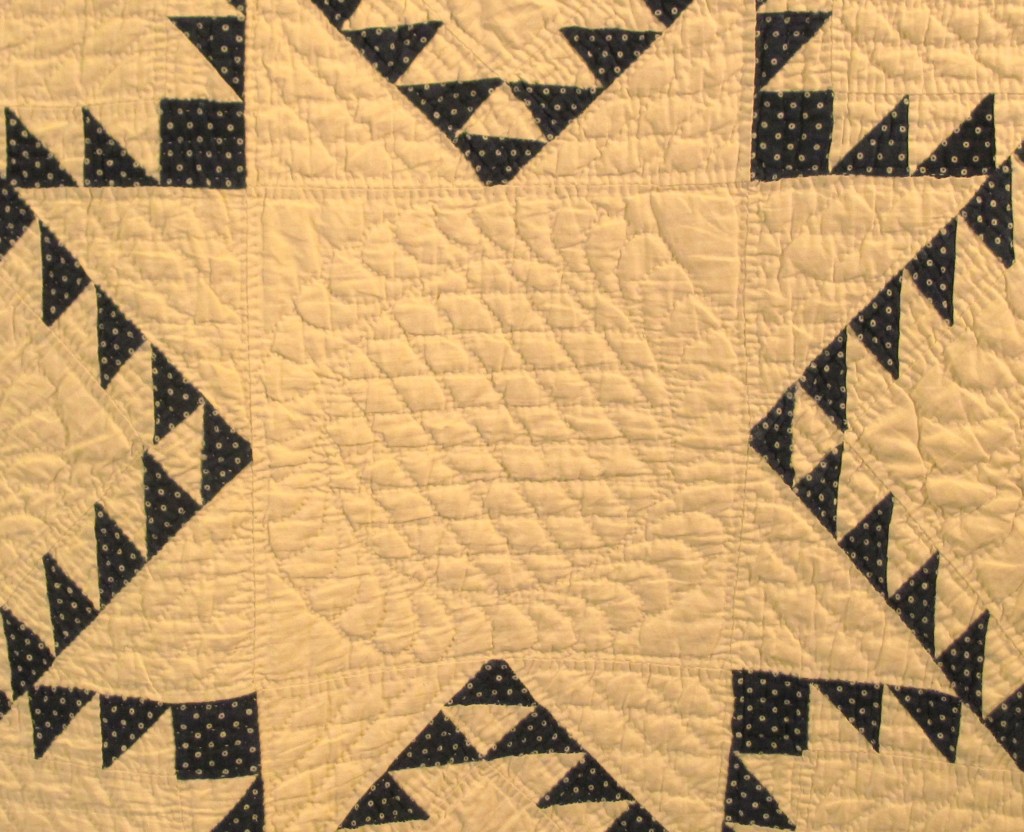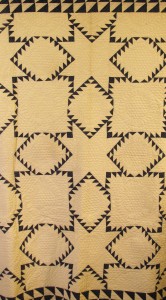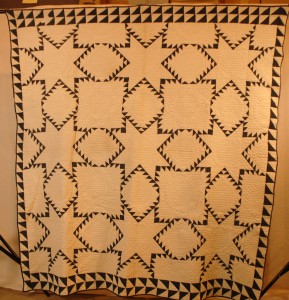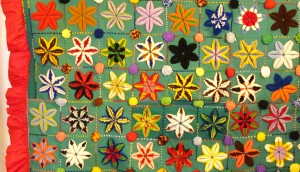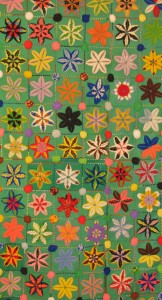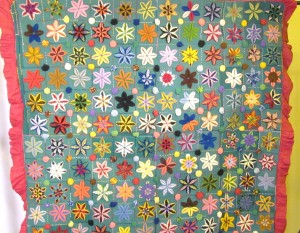Quilt: noun A coverlet for a bed, made of two layers of fabric with some soft substance, as wool or down, between them and stitched in patterns or tufted through all thicknesses in order to prevent the filling from shifting.
Random House Dictionary
From the manner in which a woman draws her thread at every stitch of her needlework, any other woman can surmise her thoughts.
Honore de Balzac

